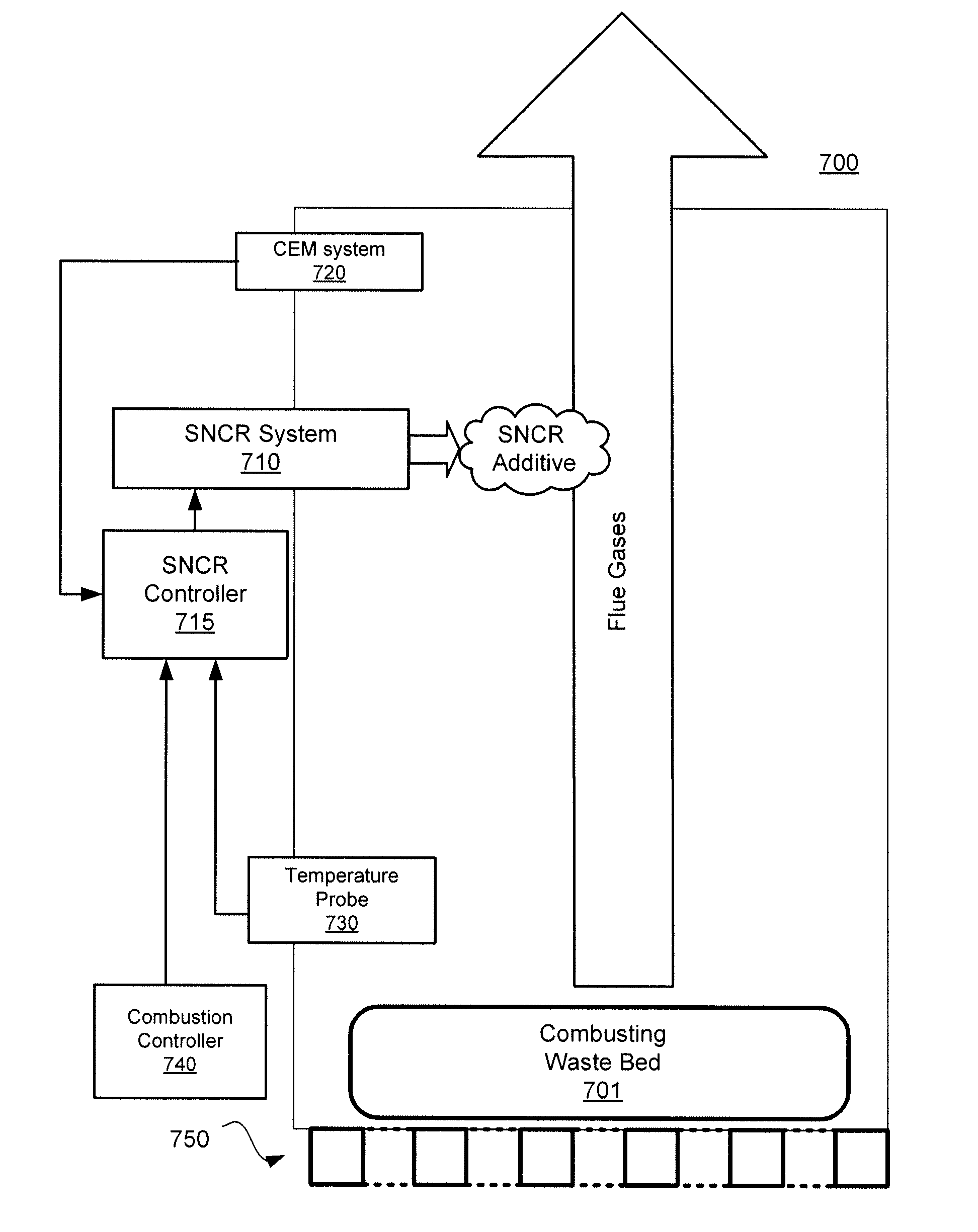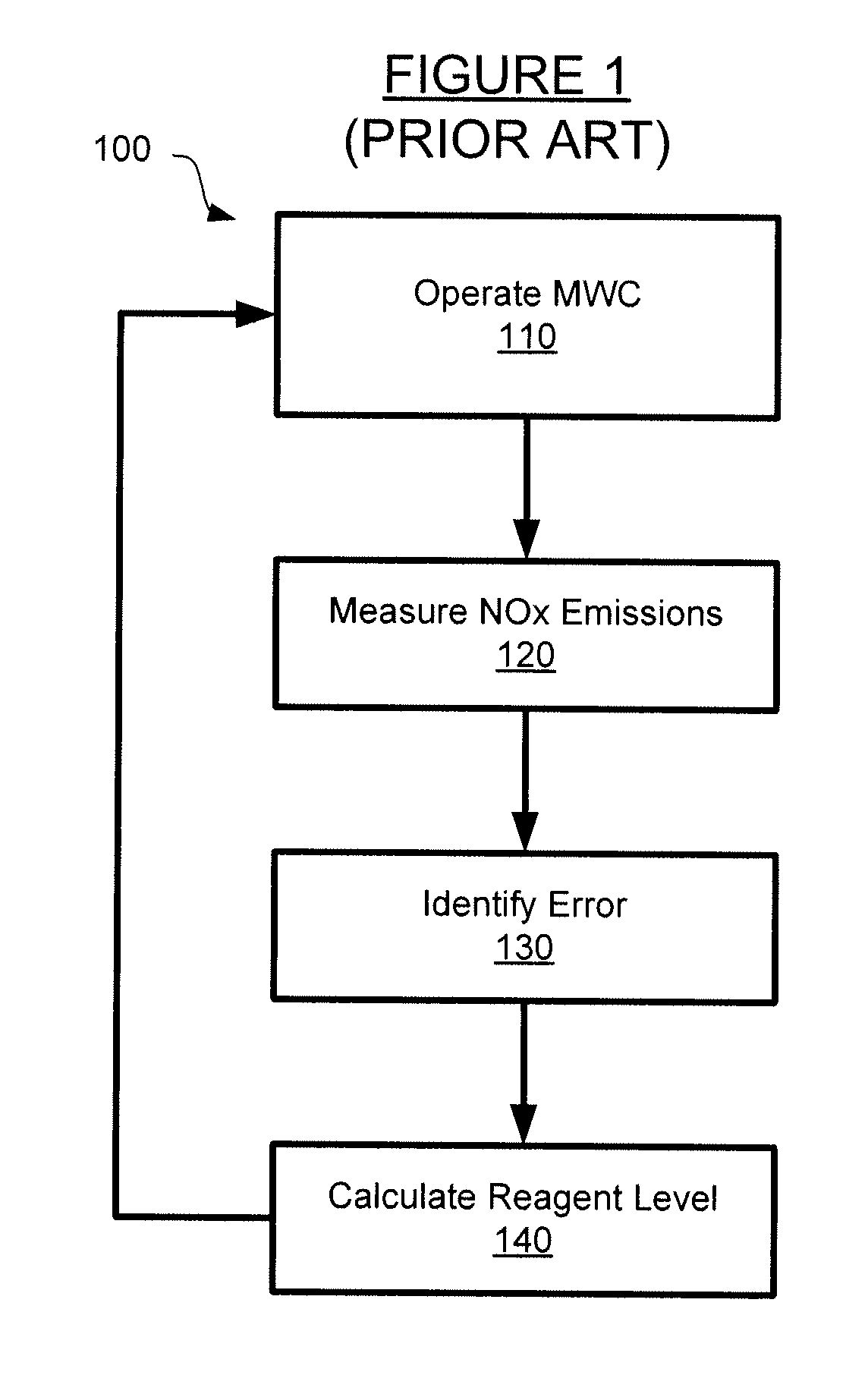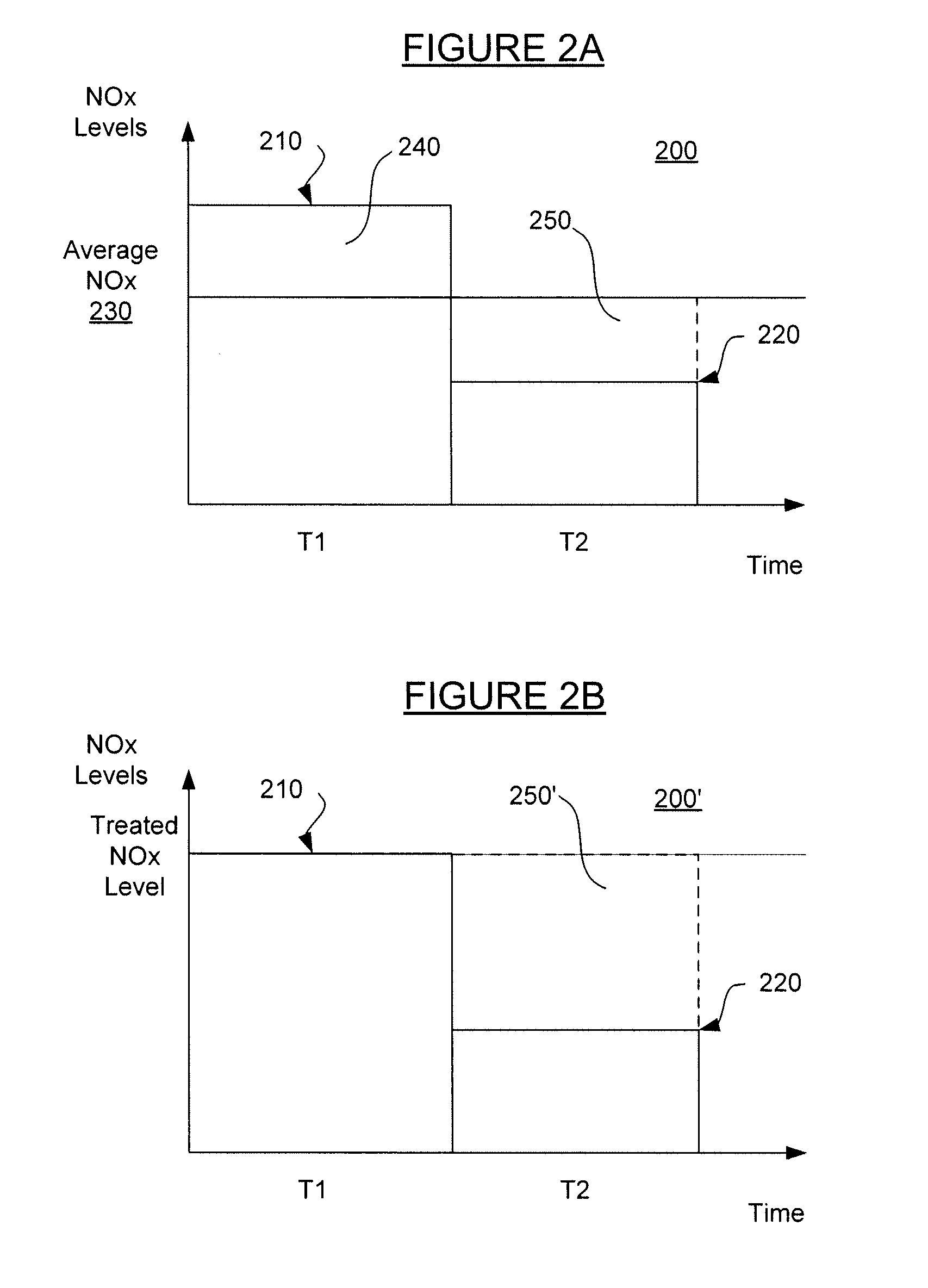Dynamic control of selective non-catalytic reduction system for semi-batch-fed stoker-based municipal solid waste combustion
- Summary
- Abstract
- Description
- Claims
- Application Information
AI Technical Summary
Benefits of technology
Problems solved by technology
Method used
Image
Examples
Embodiment Construction
[0034]As depicted in the figures and as described herein, the present invention provides an improved method and system for controlling selective non-catalytic reduction (SNCR) systems in municipal waste combustors (MWCs) to reduce both Nitrogen Oxides (NOx) emissions and ammonia slip.
[0035]Turning now to FIG. 1, a known method 100 for controlling SNCR systems is described. In the known SNCR control method 100, a MWC facility is operated in step 110. The stack NOx emissions from the MWC over one or more periods is then measured in step 120. In step 130, a proportional-integral-derivative (PID) controller is used to identify the error between the measured NOx emissions level and a desired setpoint. As known in the art, the PID controller calculation involves three separate parameters: the Proportional, the Integral and Derivative values. The weighted sum of these three parameters is used to adjust the process via a control element. Then, in step 140, a corrective reagent level (i.e., ...
PUM
| Property | Measurement | Unit |
|---|---|---|
| Temperature | aaaaa | aaaaa |
| Combustion | aaaaa | aaaaa |
Abstract
Description
Claims
Application Information
 Login to View More
Login to View More - R&D
- Intellectual Property
- Life Sciences
- Materials
- Tech Scout
- Unparalleled Data Quality
- Higher Quality Content
- 60% Fewer Hallucinations
Browse by: Latest US Patents, China's latest patents, Technical Efficacy Thesaurus, Application Domain, Technology Topic, Popular Technical Reports.
© 2025 PatSnap. All rights reserved.Legal|Privacy policy|Modern Slavery Act Transparency Statement|Sitemap|About US| Contact US: help@patsnap.com



